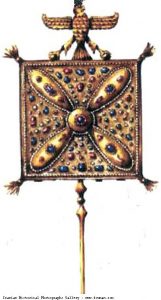about us
The Spanish Society of Iranian Studies (SEI) is a private non-profit scientific association that was born with the aim of spreading in Spain, and in the Spanish-speaking world, the knowledge of the Iranian culture, which not only deals with Iran itself, as it might seem just from the name, but with the entire Iranian world, which ranges from the Kurds scattered throughout Iran, Iraq, Turkey and Syria to the tiny Iranian ethnic groups that inhabit the Pamirs, including the Baluch and the Pashtuns of Afghanistan, and of course, the Persians who have been the main references in this culture. The SEI does not intend anything other than to gather the efforts of all Spanish-speaking “iranologists” or residents in Spain, in order to make this discipline known as well as to develop it at an academic level.
The SEI is a scientific and academic association registered with the official bodies of Spain and formed in 2009 after three meetings of experts in a specific branch of the Iranian world. The SEI is an independent academic association without affiliation to any agency dependent on the government of the Islamic Republic of Iran, and that in no case receives neither subsidies nor instructions from any of the aforementioned organizations.
Objectives of the SEI
- Disseminate and support iranology studies at the Spanish University.
- Encourage the carrying out of research projects on any academic area of the Iranian world
- Support the development, translation and editing of works that have to do with the Iranian world.
- Support the training of teachers and researchers in this area by awarding scholarships to study or conduct research in Iran.
- Serve as a link between cultural organizations in Spain and Iran.
- Promote joint research projects in the field of history and archaeology.
About our logo
 Our logo a stylized form of what is known as the “banner of Kāvē” (Darafš-e-Kāviāní, in Persian), originally the apron of a blacksmith that was raised nailed to a stake as a symbol of resistance against tyranny. According to Iranian mythology, the fourth king of the Pišdādí dynasty, Ŷamšid, – whose golden age has made him the Solomon of the Persians – was filled with vanity by his achievements during his long reign of 700 years, reaching even to believe himself as the proper God, convinced by a demon, who appeared to him. Vilely defeated shortly after by Bevar Asp (“he of the ten thousand horses”, perhaps, alluding to his numerous army), he usurped the throne under the name of Zohāk (Adhi Dhahaka, in the Avesta). Zohāk, whom the Muslim Persians turned into an Arab, tyrannized the population for a millennium by feeding human brains to the two snakes that had grown on his shoulders, among many other cruelties.
Our logo a stylized form of what is known as the “banner of Kāvē” (Darafš-e-Kāviāní, in Persian), originally the apron of a blacksmith that was raised nailed to a stake as a symbol of resistance against tyranny. According to Iranian mythology, the fourth king of the Pišdādí dynasty, Ŷamšid, – whose golden age has made him the Solomon of the Persians – was filled with vanity by his achievements during his long reign of 700 years, reaching even to believe himself as the proper God, convinced by a demon, who appeared to him. Vilely defeated shortly after by Bevar Asp (“he of the ten thousand horses”, perhaps, alluding to his numerous army), he usurped the throne under the name of Zohāk (Adhi Dhahaka, in the Avesta). Zohāk, whom the Muslim Persians turned into an Arab, tyrannized the population for a millennium by feeding human brains to the two snakes that had grown on his shoulders, among many other cruelties.
Finally it happened that a blacksmith, Kāvē, had his two sons murdered to feed the despot’s snakes, but he rebelled, went out into the streets, called the people to insurrection, nailed his leather apron on a stake to use it as a banner, and, after a series of adventures and vicissitudes that differ depending on the source, he dethroned the malevolent monarch, whom he chained in a cave in Damāvand, an extinct volcano located in northeast Iran, where the legend keeps he has remained ever since until the end of time.
History or legend, the fact is that the drawing of Kāvē’s apron takes on a particular relevance when it goes down in true history with the Sassanid dynasty (224-652), which adopts it as a shield or national emblem. From there, the generals of this dynasty will march to war with their armies preceded by a huge reproduction of this banner, to which they will add a gem for each military victory. Over the centuries, the banner of Kāvē was filled with precious stones, which made this piece of leather a very valuable piece in case it fell into the hands of the enemy, as it happened, when the Arabs took it in the battle of Qadisiya (636). They took it as a trophy, tore it into pieces to distribute it, and its embroidered scraps ended up sold in the souks of Medina

